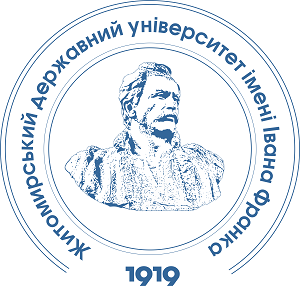INFLUENCE OF TECHNOLOGICAL GROWING METHODS ON THE SPECIFIC AND CHEMICAL COMPOSITION OF THE BINARY CROP OF MELILOTUS ALBUS WITH CEREAL CROPS
DOI:
https://doi.org/10.32782/naturaljournal.12.2025.22Keywords:
legume-cereal mixtures, yield, species composition, crude protein, crude fat, crude fiber, nitrogen-free extractivesAbstract
Production of sufficient quantities of high-quality grassy forages balanced in protein content is an important factor in increasing the economic efficiency of livestock farming. One of the effective ways to reduce protein deficiency and provide animals with complete feed is to grow legume-cereal grass mixtures, the vegetative mass of which contains an optimal combination of protein and carbohydrate compounds, mineral salts and other necessary nutrients. Among the traditional perennial legume crops used in legume-cereal agrophytocenoses, Melilotus albus deserves special attention – a promising fodder crop that is capable of providing stable yields of green mass even under adverse weather conditions. However, there is currently little scientific information on the technological features of growing Melilotus albus in intercropping with cereal crops. The aim of the research is to establish the features of the formation of the species and chemical composition of the herbage of binary crops of Melilotus albus with annual cereal crops depending on the technological cultivation measures. The research was conducted in 2015–2017 in the conditions of the SS of the NULES of Ukraine “Agronomic Research Station”. It was found that thickening of grass with a legume component led to the suppression of cereal crops, especially in binary crops with millet. The highest competitiveness and resistance to thickening were observed in sudan grass and corn.The technological model, which provided maximum yield (51.5 t/ha) and provided for sowing white yam at a rate of 16 kg/ha in binary sowing with Sudan grass against the background of N60P90K90application, also obtained the highest content of crude protein in dry matter of biomass – 20.6%. At the same time, the content of crude fat, crude fiber and NFE was, respectively, 3.56, 23.21 and 43.11%. The lowest feed value in the experiment was noted in crops of legume-cereal phytocenosis with millet.
References
Бабич А.О. Методика проведення дослідів по кормовиробництву. Вінниця, 1994. 96 с.
Вожегова Р.А., Влащук А.М., Прищепо М.М. Буркун білий однорічний: властивості та переспективи. 2017. [Електронний ресурс] URL: https://agro-business.com.ua/agro/ahronomiia--sohodni/item/801-burkun-bilyi-odnorichnyi-vlastyvosti-ta-perspektyvy.html (дата звернення 10.04.2025).
Демидась Г.І., Захлєбаєв М.В. Значення буркуну білого в кормовиробництві. Науковий вісник НУБіП України. 2015. Вип. 210. С. 18–21.
Захлєбаєв М.В. Продуктивність буркуну білого в одновидових та сумісних посівах зі злаковими культурами в залежності від мінерального живлення та норм висіву на чорноземах типових в умовах Правобережного Лісостепу України. Наукові доповіді НУБіП України. 2018. Вип. 2 (72). [Електронний ресурс] URL: http://www.nbuv.gov.ua/ejournals/Nd/2011_4/11ksm.pdf. (дата звернення 16.11.2023).
Панахид Г.Я., Коник Г.С., Мізерник Д.І., Ярмолюк М.Т. Створення та використання лучних ценозів Карпатського регіону : монографія. Львів : СПОЛОМ, 2017. 300 с.
Петриченко В.Ф., Гетман Н.Я. Фактори підвищення продуктивності агрофітоценозів багаторічних бобових трав в умовах Лісостепу Правобережного. Корми і кормовиробництво. 2017. Вип. 84. С. 3–9.
Свистунова І.В., Захлєбаєв М.В., Чумаченко І.П., Полторецький С.П., Соломон В.В., Сеник І.І., Шувар А.М. Формування урожайності надземної маси буркуну білого в одновидових та сумісних посівах в умовах правобережного Лісостепу України. Наукові доповіді НУБіП України. 2024. № 1 (107). http://dx.doi.org/10.31548/dopovidi.1(107).2024.008.
Demydas G., Zakhlebaev M., Shuvar I., Lipinska H., Wylupek, T. The formation of the leaf surface of white melilot (Melilotus albus) depending on fertilization, seed mix and seeding rate. Agronomy Science, 2020. Vol. 75 (4). http://dx.doi.org/10.24326/as.2020.4.9.
Kamal M., Cao Y., Gao J., Li N., Zhao X. Effects of feeding Melilotus albus on growth performance, carcass traits, and meat quality of Hu sheep. Animal Advances. 2025. P. e010. http://dx.doi.org/10.48130/animadv-0025-0008.
Kara K. Nutrient matter, fatty acids, in vitro gas production and digestion of herbage and silage quality of yellow sweet clover (Melilotus officinalis L.) at different phenological stages. Journal of Animal and Feed Sciences. Polish Academy of Sciences. Poland. 2021. Vol. 30 (2). P. 128–140. http://dx.doi.org/10.22358/jafs/136401/2021.
Kazarina A.V., Marunova L.K., Atakova E.A., Abramenko I.S. Ecological plasticity and adaptive potential of annual form of white sweet clover (Melilotus albus Medik). In E3S Web of Conferences. 2023. Vol. 411, p. 02045). EDP Sciences. https://doi.org/10.1051/e3sconf/202341102045.
Kintl A., Hunady I., Holátko J., Vítez T., Hammerschmiedt T., Brtnický M., Ondrisková V., Elbl J. Using the mixed culture of fodder mallow (Malva verticillata L.) and white sweet clover (Melilotus albus Medik.) for methane production. Fermentation. 2022. Vol. 8 (3). P. 94. https://doi.org/10.3390/fermentation8030094.
Lahkim M., Mohammed A., Aarab A., Brigui J. Nutritive value of Melilotus officinalis ecotypes from the North-western Moroccan pastures. Options Méditerranéennes Series A. International Centre for Advanced Mediterranean. Agronomic Studies. 2021. Vol. 125. P. 579–582.
Razanov S.F., Ibatulin I.I., Razanov O.S., Dydiv A.І., Voynalovich M.V., Lysak H.А. and Lopotych M.J. Productivity of bee families and biomonitoring of corbicular pollen and war-affected honeybee foraging sites with cultivated honey clover (Melilotus albus). Regulatory Mechanisms in Biosystems. 2024. Vol. 15 (1) (Feb. 2024). P. 171–176. https://doi.org/10.15421/022425.
Sowa-Borowiec P., Jarecki W., Dżugan M. The Effect of Sowing Density and Different Harvesting Stages on Yield and Some Forage Quality Characters of the White Sweet Clover (Melilotus albus). Agriculture. 2022. Vol. 12 (5). P. 575. https://doi.org/10.3390/agriculture12050575.






